3-Ethylpyridine
- CAS NO.:536-78-7
- Empirical Formula: C7H9N
- Molecular Weight: 107.15
- MDL number: MFCD00006413
- EINECS: 208-647-2
- SAFETY DATA SHEET (SDS)
- Update Date: 2023-05-25 18:01:15
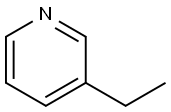
What is 3-Ethylpyridine?
Chemical properties
liquid
Chemical properties
3-Ethylpyridine has tobacco taste and flavor.
Occurrence
Reported found in coffee, beer, whiskey, roasted chicken, tea, oatmeal, clams, shrimp and squid, cooked chicken, dried bonito, krill, and Virginia tobacco.
The Uses of 3-Ethylpyridine
3-Ethylpyridine was used to to identify the toxicants in cigarette smoke solutions and to determine their effective doses using in vitro bioassays.
What are the applications of Application
3-Ethylpyridine is a constituent of cigarette smoke
Definition
ChEBI: 3-Ethylpyridine is a member of pyridines.
Taste threshold values
Aroma characteristics at 1.0%: chemical, grainy, beany, musty and earthy, leafy tobacco-like with nutty nuances of peanut and coffee, with raw potato nuances.
Synthesis Reference(s)
The Journal of Organic Chemistry, 31, p. 4267, 1966 DOI: 10.1021/jo01350a524
General Description
3-Ethylpyridine is a constituent of cigarette smoke.
Biochem/physiol Actions
3-Ethylpyridine is degraded by Gordonia nitida sp. LE31T isolated from an industrial waste water.
Properties of 3-Ethylpyridine
| Melting point: | -77 °C |
| Boiling point: | 163-166 °C (lit.) |
| Density | 0.954 g/mL at 25 °C (lit.) |
| refractive index | n |
| FEMA | 3394 | 3-ETHYLPYRIDINE |
| Flash point: | 120 °F |
| solubility | alcohol: freely soluble |
| form | clear liquid |
| pka | pK1:5.80(+1) (20°C) |
| Specific Gravity | 0.954 |
| color | Colorless to Almost colorless |
| Odor | at 0.10 % in dipropylene glycol. tobacco oakmoss leather |
| Water Solubility | 270.1g/L(196 ºC) |
| Sensitive | Hygroscopic |
| Merck | 14,3848 |
| JECFA Number | 1315 |
| BRN | 106479 |
| Stability: | Stable. Flammable. Incompatible with strong oxidizing agents, strong acids. May be moisture sensitive. |
| CAS DataBase Reference | 536-78-7(CAS DataBase Reference) |
| NIST Chemistry Reference | 3-(C2H5)-pyridine(536-78-7) |
| EPA Substance Registry System | 3-Ethylpyridine (536-78-7) |
Safety information for 3-Ethylpyridine
| Signal word | Warning |
| Pictogram(s) |
 Flame Flammables GHS02  Exclamation Mark Irritant GHS07 |
| GHS Hazard Statements |
H226:Flammable liquids H315:Skin corrosion/irritation H319:Serious eye damage/eye irritation H335:Specific target organ toxicity, single exposure;Respiratory tract irritation |
| Precautionary Statement Codes |
P210:Keep away from heat/sparks/open flames/hot surfaces. — No smoking. P302+P352:IF ON SKIN: wash with plenty of soap and water. P305+P351+P338:IF IN EYES: Rinse cautiously with water for several minutes. Remove contact lenses, if present and easy to do. Continuerinsing. |
Computed Descriptors for 3-Ethylpyridine
New Products
4-AMINO-TETRAHYDRO-PYRAN-4-CARBOXYLIC ACID HCL 4-(Dimethylamino)tetrahydro-2H-pyran-4-carbonitrile 4-Aminotetrahydropyran-4-carbonitrile Hydrochloride (R)-3-Aminobutanenitrile Hydrochloride 3-((Dimethylamino)methyl)-5-methylhexan-2-one oxalate 1,4-Dioxa-8-azaspiro[4.5]decane 5-Bromo-2-nitropyridine Nimesulide BP Aceclofenac IP/BP/EP Diclofenac Sodium IP/BP/EP/USP Mefenamic Acid IP/BP/EP/USP Ornidazole IP Diclofenac Potassium THOMAIND PAPER PH 2.0 TO 4.5 1 BOX BUFFER CAPSULE PH 9.2 - 10 CAP SODIUM CHLORIDE 0.1N CVS ALLOXAN MONOHYDRATE 98% PLATINUM 0.5% ON 3 MM ALUMINA PELLETS (TYPE 73) LITHIUM AAS SOLUTION 2-Bromo-1-(bromomethyl)-3-chloro-5-nitrobenzene 2-Bromo-3-nitroaniline N-(3-Hydroxypropyl)-N-methylacetamide 3-Bromo-6-chloropyridazine 4-ethyl-3-nitrobenzoic acidRelated products of tetrahydrofuran

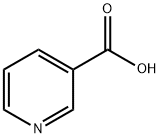
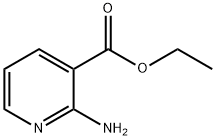
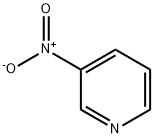
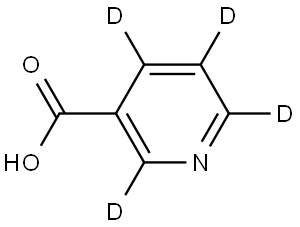
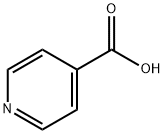
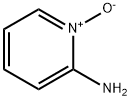
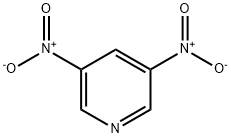
You may like
-
 3-Ethylpyridine, 98% CAS 536-78-7View Details
3-Ethylpyridine, 98% CAS 536-78-7View Details
536-78-7 -
 3-Ethylpyridine CAS 536-78-7View Details
3-Ethylpyridine CAS 536-78-7View Details
536-78-7 -
 3-Ethylpyridine CAS 536-78-7View Details
3-Ethylpyridine CAS 536-78-7View Details
536-78-7 -
 1823368-42-8 98%View Details
1823368-42-8 98%View Details
1823368-42-8 -
 2-(3-(tert-butyl)phenoxy)-2-methylpropanoic acid 1307449-08-6 98%View Details
2-(3-(tert-butyl)phenoxy)-2-methylpropanoic acid 1307449-08-6 98%View Details
1307449-08-6 -
 Ethyl 3-(furan-2-yl)-3-hydroxypropanoate 25408-95-1 98%View Details
Ethyl 3-(furan-2-yl)-3-hydroxypropanoate 25408-95-1 98%View Details
25408-95-1 -
 2-Chloro-5-fluoro-1-methoxy-3-methylbenzene 98%View Details
2-Chloro-5-fluoro-1-methoxy-3-methylbenzene 98%View Details
1805639-70-6 -
 Lithium ClavulanateView Details
Lithium ClavulanateView Details
61177-44-4